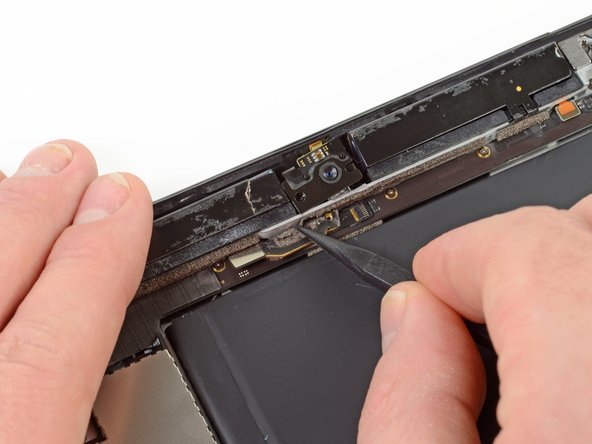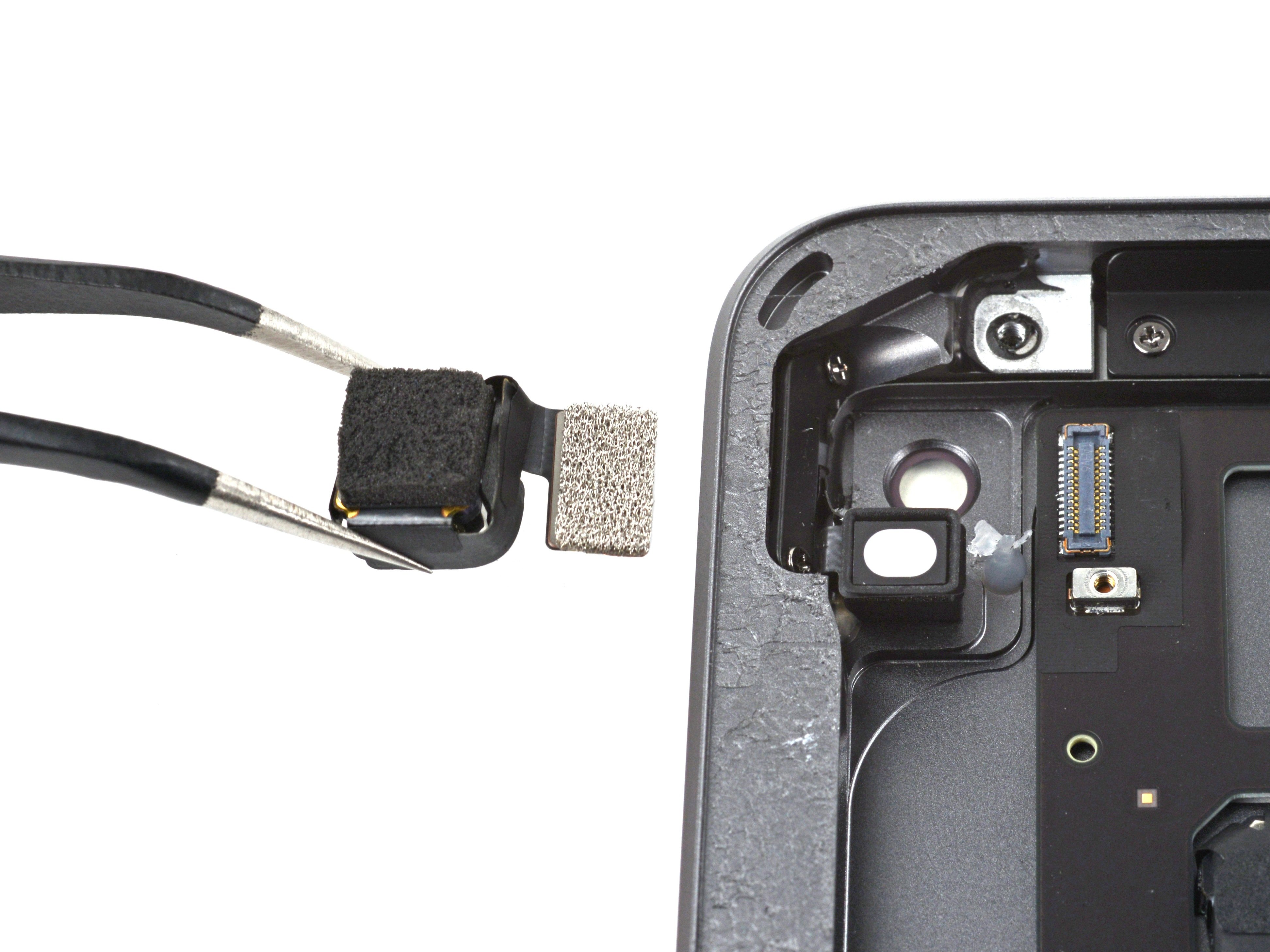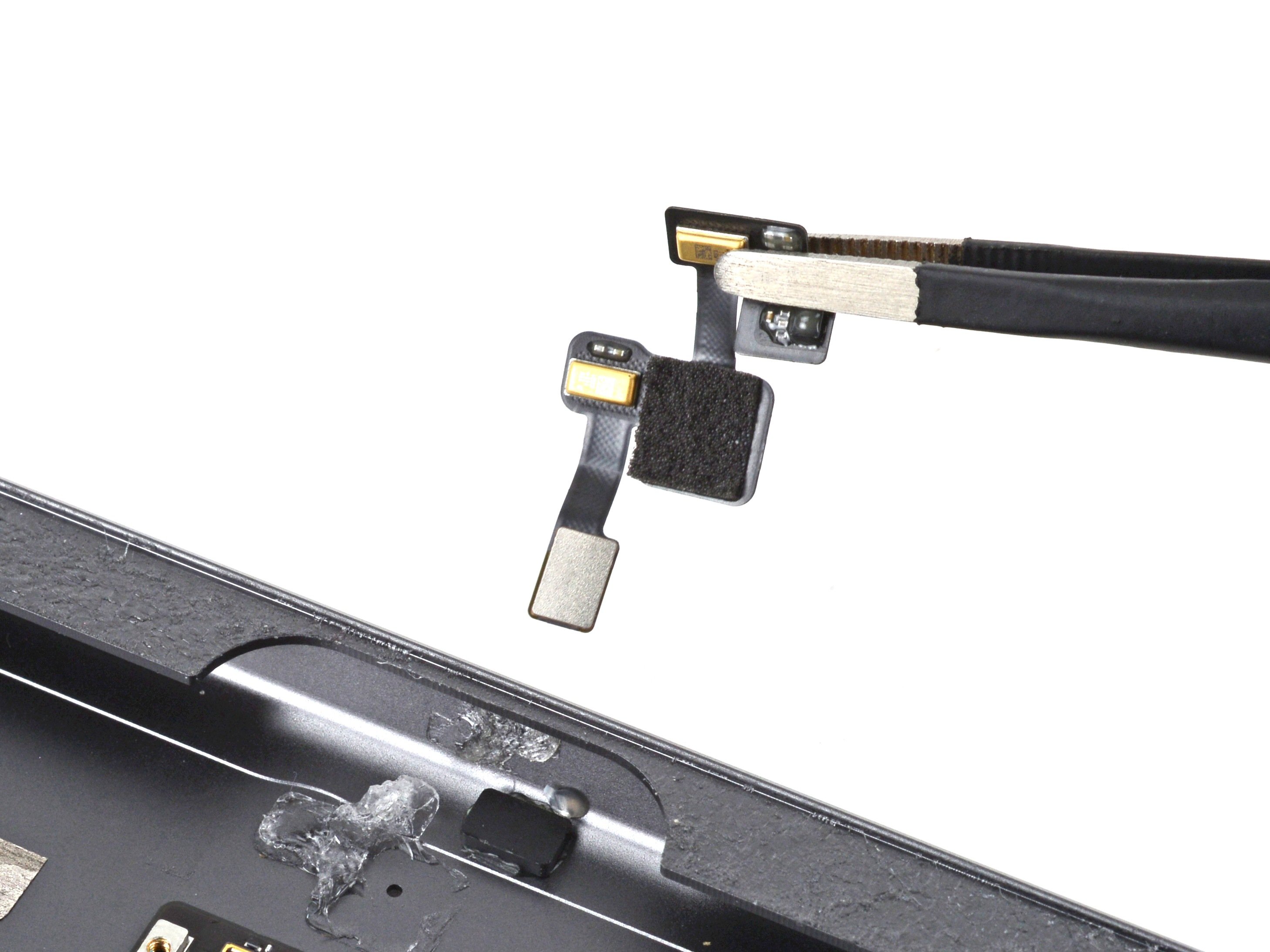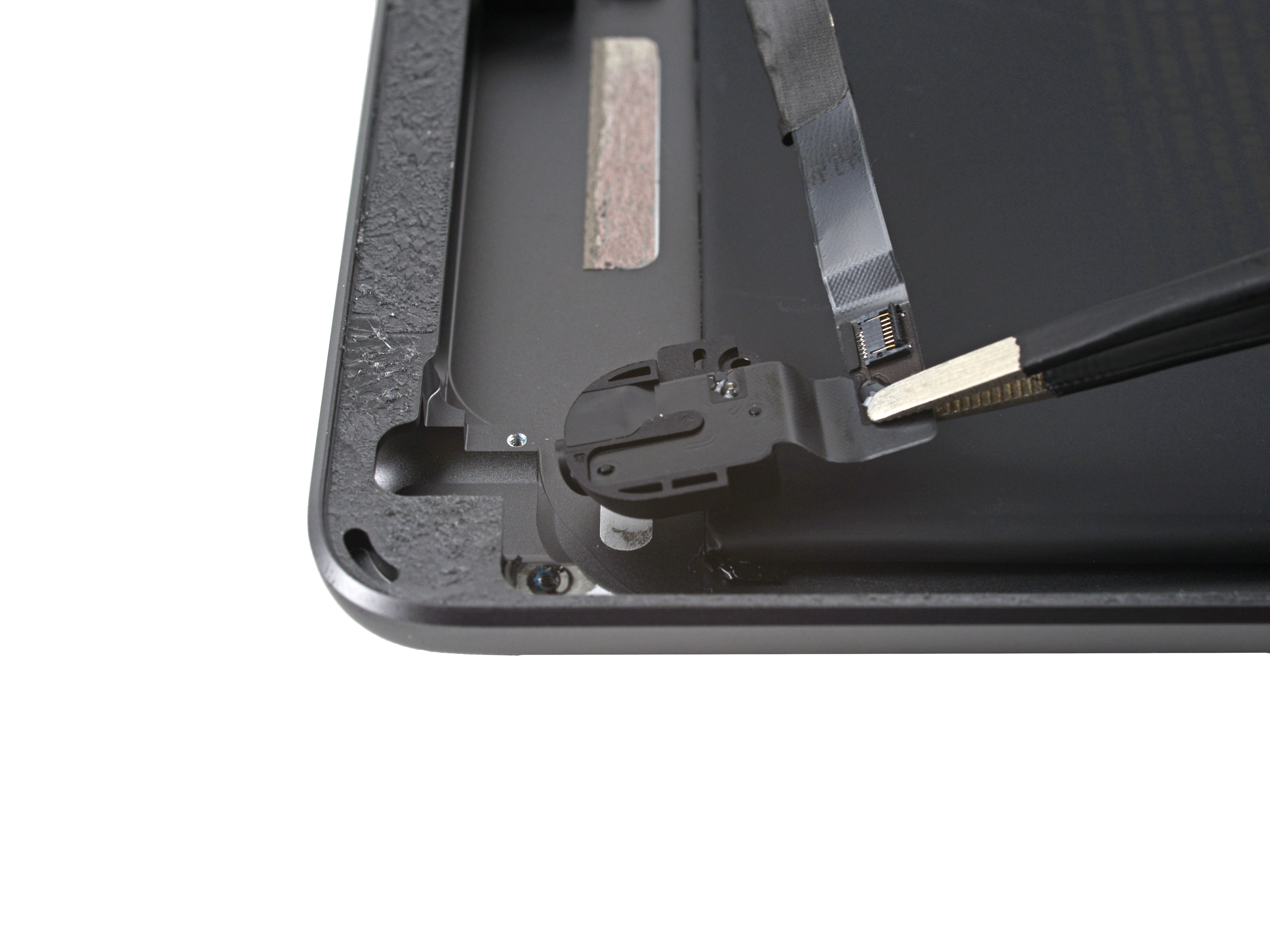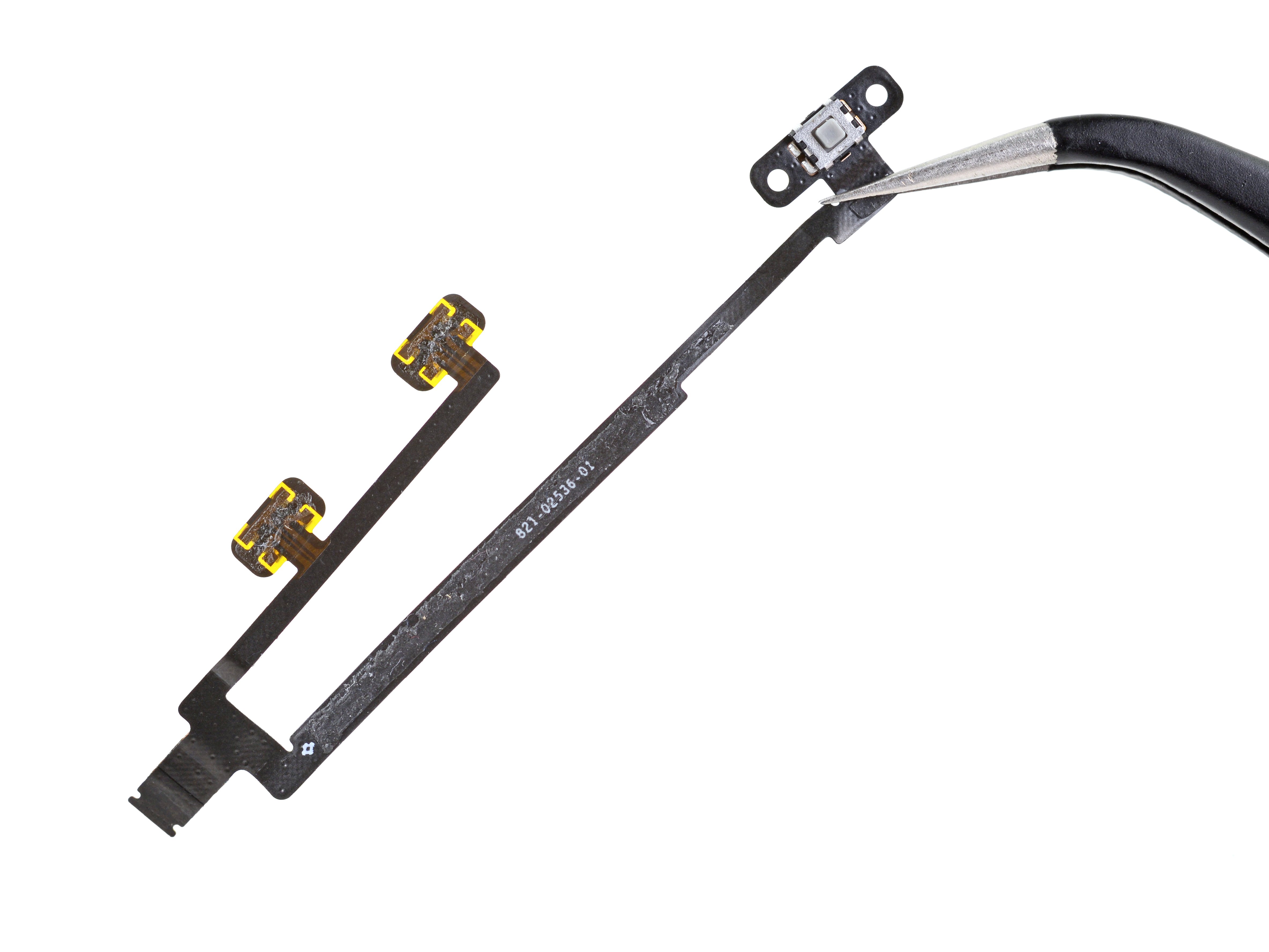How to Replace iPad GSM Front Facing Camera – DIY Guide
Duration: 45 minutes
Steps: 47 Steps
Hey there, repair champion! Just a quick heads up: while you’re diving into this repair adventure, make sure you’re working in a clean, well-lit space. It can make all the difference! And remember, if you hit a snag, don’t hesitate to schedule a repair. We’ve got your back!
Get ready to swap out that front-facing camera with this handy guide! It’s all about making your device camera-ready again. If you’re feeling a bit stuck, remember, you can always schedule a repair.
Step 1
Before diving in, give your microwave a little TLC! Cleaning it up will ensure that any stubborn bits of gunk won’t hitch a ride on your iOpener.
– Pop that iOpener right in the middle of the microwave!
Tools Used
Step 2
Keep an eye on that iOpener! We don’t want it getting too hot to handle—overheating could lead to an unexpected burst. Aim to keep the temperature below 100˚C (212˚F).
If your iOpener looks like it’s been hitting the gym and is swollen, steer clear and don’t touch it.
If the middle of your iOpener is still too toasty, just hang tight and let it cool down a bit more before giving it another round of heat. A well-heated iOpener should keep you cozy for about 10 minutes!
– Give that iOpener a warm-up in the microwave for thirty seconds.
– As you go through the repair, keep an eye on the iOpener—when it starts to cool down, just pop it back in the microwave for another thirty seconds to keep things toasty.
Tools Used
Step 3
Watch out! The iOpener is going to be super hot, so handle it with care. An oven mitt could be your best friend here!
– Carefully take the iOpener out of the microwave, gripping one of the flat ends to steer clear of that hot center. Stay safe and keep it cool!
Tools Used
Step 4
No microwave? No problem! Just follow this step to warm up your iOpener in some good old boiling water.
– Grab a pot or pan and fill it up with enough water to give your iOpener a nice, cozy bath.
– Bring that water to a rolling boil and then turn off the heat. Safety first!
– Carefully dunk the iOpener into the hot water for about 2-3 minutes. Just make sure it’s fully enjoying its soak.
– Using some tongs, gently lift out your warm iOpener from its steamy retreat.
– Give it a good dry with a towel so it’s nice and ready for action.
– And voilà! Your iOpener is all set to go! If you find it needs a little more warmth, just repeat the process: boil the water, turn off the heat, and let it relax in there for another 2-3 minutes.
Tools Used
Step 5
Put on those stylish safety glasses to keep your peepers protected, and remember to handle that LCD screen with care – it’s more delicate than it looks!
– Got a cracked display? No worries! To keep the shards in check and protect yourself while you tackle this repair, grab some tape and cover that glass up.
– Start by laying down overlapping strips of clear packing tape all over your iPad’s display until it’s fully covered. Think of it as giving your device a nice, protective hug!
– Now, follow the guide as best you can. Just a heads up, once the glass starts to break, it might keep cracking as you work. Don’t stress! You might need a metal prying tool to help scoop out those pesky pieces.
Step 6
Hey there! Just a quick heads-up: while you’re getting your hands dirty with that broken glass, it’s a smart move to rock some safety glasses. They’ll keep those pesky shards from surprising you!
– Place the iOpener flat against the right edge of your iPad, ensuring it makes solid contact with the surface. Smooth it out for maximum effect!
– Give the bag a little chill time on the iPad for about 90 seconds before you dive into opening that front panel.
Tools Used
Step 7
Getting that pesky wedged tip of the opening tool between the glass and plastic might take a bit of elbow grease. Just take your time and stay cool—gently wiggle the plastic opening tool back and forth as needed to work your magic.
– Spotting a little gap in the iPad’s adhesive ring? That’s in the upper right corner, about 2.0 inches (~5 cm) from the top. Let’s take advantage of that little flaw!
– Now, line up your tool with the mute button. Gently slide the tip of a plastic opening tool into the gap between the front glass and the plastic bezel. Just insert the very tip, just enough to give that crack a little nudge!
Step 9
– With the tip of your trusty plastic opening tool snugly nestled between the front glass and plastic bezel, gently slide a plastic opening pick into that little gap, right next to where your tool is. You’re doing great!
Step 10
– Take the plastic opening tool out from the iPad, and gently slide the opening pick further under the front glass to about half an inch deep.
Step 12
The adhesive is super strong, so be prepared to channel your inner Hercules! Take your time and be gentle with it.
If you can spot the tip of that trusty opening pick peeking out from under the front glass, give it a gentle tug to pull it out just a smidge. While it’s totally fine to use the pick this deep, it might leave a bit of adhesive residue on the LCD. No biggie, just part of the adventure!
– As the iOpener works its magic on the bottom edge, start loosening the adhesive on the right edge of your iPad.
– Gently slide the opening pick down the edge of the iPad, freeing up the adhesive as you go along.
Tools Used
Step 13
As you start to peel away the adhesive, you might find it helpful to slide the warm iOpener back onto the right edge of the iPad. Just keep an eye on how long the iPad has been cooling while you’ve been busy working on it.
– If your opening pick is feeling a bit clingy and gets stuck in the adhesive, just give it a gentle ‘roll’ along the side of the iPad to keep freeing up that sticky stuff.
Tools Used
Step 14
– Before you dive in and pull out that first opening pick from the bottom corner of the iPad, be sure to slide a second pick under the right edge of the front glass. This little move will keep the adhesive from making a comeback.
– Give your iOpener a little reheating love, then place it at the top edge of the iPad. Let’s keep things warm and cozy!
Tools Used
Step 15
The Wi-Fi antenna is snugly secured to the bottom right edge of the rear case of the iPad with screws and a cable. Since the antenna’s orientation is a bit finicky, be sure to handle it with care to avoid any potential damage. You’ve got this!
– Alright, folks! Time to tread lightly through the next few steps.
– We’ll be freeing up the adhesive that holds the antenna to the front panel, but we need to do it with care so we don’t harm those sensitive parts connecting the antenna to the bottom of the iPad. Just take it step by step, and you’ll be golden!
Step 16
Hey there! Just a quick heads up: don’t slide that pick past the bottom right corner. You might accidentally mess up the Wi-Fi antenna, and we wouldn’t want that!
– Gently glide the opening pick around the bottom right corner of the iPad to free that sticky adhesive. You’ve got this!
Step 17
As you glide the opening pick along the bottom right edge of the front panel, keep an eye out! The Wi-Fi antenna is lurking close to the corner, and if you’re not careful with that adhesive, it might just wave goodbye. So take it slow and steady!
Just slide the pick under the front glass, but don’t go all the way! Leave about 1/8″ (3 mm) of the tip still tucked away under the glass. You’re doing great!
– Gently glide the tip of the opening pick along the bottom edge of your iPad, letting it work its magic to release the adhesive around the Wi-Fi antenna. Remember, patience is key!
Step 18
– After you’ve gracefully glided past the Wi-Fi antenna (that’s about 3 inches or 75 mm from the right edge, pretty close to the home button), slide that trusty opening pick back in all the way.
– Now, give that pick a little nudge to the right to free the Wi-Fi antenna from its adhesive buddy holding it to the front glass.
Step 19
Keep the iOpener’s heating time to just one minute at a go, and give it a little breather of at least two minutes before you fire it up again.
If the adhesive has cooled down a bit too much along the bottom edge, give the iOpener another go to warm up that sticky goodness where you’re working.
– Keep gently peeling away the adhesive at the bottom of the iPad, making sure to pull the opening pick out just enough to slip around the home button. Once you’ve navigated past the button, pop that pick back in to a depth of about 1/2 inch (10 mm).
Tools Used
Step 20
– Keep peeling back that adhesive along the bottom edge of your iPad until it’s all gone. You’re doing great!
– Once you’ve got that covered, pop the opening pick right under the front glass near the home button and leave it there for now.
Step 22
If the adhesive has decided to chill out a bit too much, simply swap in a fresh iOpener along the top edge and keep the momentum going. If your iOpener is feeling a little too cool, just give it a quick reheating session!
– Gently glide that opening pick along the top edge of your iPad, giving it a little tug to navigate around the front-facing camera bracket.
– The adhesive in this area is pretty thick, so you might need to apply a bit of muscle. Just take your time and be careful, avoiding any slips that could lead to mishaps with yourself or your iPad.
– If your pick feels like it’s stuck in the adhesive, try ‘rolling’ it as demonstrated in step 9.
Tools Used
Step 23
If the adhesive is feeling nice and warm, go ahead and take the iOpener off the iPad for a bit of ease. But if it’s still clinging on like a loyal pet, just give the iOpener another heat-up and place it on the left edge while you tackle the task at hand.
– Keep working that adhesive loose along the top edge of your iPad, then glide the opening pick around that top left corner like a pro!
Tools Used
Step 24
The digitizer cable hangs out about 2 inches (50 mm) from the bottom of the iPad. So, when you’re sliding that pick, take a breather and stop when you’re around 2.25 inches (60 mm) from the bottom. You’re doing great!
– Gently glide that trusty opening pick down the left side of your iPad, letting it free the adhesive as you go. This area is a bit more relaxed with adhesive because of the digitizer hanging out along the entire left edge. Just remember, keep the pick shallow—around 1/2 inch (10 mm) max—to avoid any digitizer drama.
Step 25
Be super careful! The digitizer cable is just about 1″ (25 mm) away from the bottom of the iPad. Take your time and work gently to avoid cutting this cable.
– With the trusty opening pick still tucked under the bottom edge of your iPad, gently coax the adhesive loose from the bottom left corner. You’re almost there!
Step 26
It looks like some of that adhesive around the edge of your iPad might have decided to stick around a bit longer than expected. No worries! Just slide a pick under the edge where the front glass is still hanging on and gently ‘cut’ through that adhesive. You’ve got this! If you need help, you can always schedule a repair.
– With one of your trusty opening picks in hand, gently lift the bottom right corner of the iPad and give it a little friendly tug with your fingers.
Step 27
Watch out for any sticky adhesive still hanging around! Grab an opening pick to gently slice through any glue that might be keeping the front panel in place.
– Grab your iPad by the top and bottom right corners, and gently twist the front glass away from the device. You’ve got this!
– When putting it all back together, take a moment to use a microfiber cloth and some compressed air to wipe away any dust or fingerprints from the LCD before you set the glass back in place. A little clean-up goes a long way!
Step 28
The bottom left screw is hiding behind the home button ribbon cable connector. Gently nudge the home button ribbon cable aside to get to that pesky bottom left screw.
– Unscrew the four 2 mm Phillips #00 screws that are holding the LCD to the aluminum frame. You’ve got this!
Step 29
Handle the LCD with care! That ribbon cable is delicate and could snap if bent too much.
– Grab your trusty plastic opening tool or spudger and gently pry up the right edge of the LCD from the iPad. It’s like giving it a little nudge to say, ‘Hey, time to come out!’
– Now, with the LCD lifted, swing it around on its left edge and place it down gently on top of the front glass panel. It’s a delicate dance, but you’ve got this!
Tools Used
Step 30
– Grab your trusty spudger and gently peel away the tape that’s snugly holding down the LCD ribbon cable connector. You’ve got this!
Tools Used
Step 31
– Gently lift the retaining flap on the LCD ribbon cable ZIF connector—it’s like a tiny door waiting to be opened!
– Using your fingers or a trusty pair of tweezers, carefully wiggle the LCD ribbon cable out from its cozy home on the logic board.
– If the LCD screen decides to play hard to get and doesn’t power on after connecting the ZIF connector, give your iPad a little pep talk by holding down the power button and home button for at least ten seconds until that Apple logo lights up like a star!
Tools Used
Step 32
– Gently lift the LCD away from the front panel without touching its surface.
Step 33
If you’ve got some electrical tape hanging around, go ahead and peel it off from the Wi-Fi antenna, speaker cable, and home button ribbon cable. Let’s get those connections ready for action!
Step 35
– Grab your trusty tweezers and gently tug the home button ribbon cable straight out from its cozy home on the logic board. You’ve got this!
Tools Used
Step 37
– With the spudger’s tip in hand, gently lift the tape that holds the digitizer ribbon cable snugly against the logic board. You’re doing great!
Tools Used
Step 38
– Lift the retaining flap on both of the digitizer ribbon cable ZIF connectors with a gentle touch.
Step 39
– Grab your trusty spudger and gently slide the flat end underneath the digitizer ribbon cable to break free that sticky adhesive.
– Once you’ve loosened it up, give that digitizer ribbon cable a gentle pull straight out of its cozy sockets on the logic board.
Tools Used
Step 40
– Gently lift the digitizer ribbon cable and grab your trusty spudger. Use the flat end to carefully release the adhesive that’s holding the cable snug against the rear aluminum case. You’re doing great!
Tools Used
Step 41
– With a gentle touch, coax the digitizer ribbon cable out of its cozy little spot in the aluminum frame.
– Carefully lift off the front panel from your iPad, like peeling a banana, but way cooler!
Step 42
– Carefully peel away the adhesive tape that’s snugly holding down the headphone jack assembly. You’re almost there!
Step 43
– Unscrew the lone 2.6 mm Phillips #0 screw that’s holding the camera ribbon cable in place on the headphone jack assembly. You’ve got this!
Step 44
– Grab your trusty spudger and gently wiggle the flat end under the front-facing camera, popping it out of its cozy spot on the headphone jack assembly.
– Now, keep that spudger handy and slide it to the right. This will help free the adhesive that’s been holding the camera ribbon cable in place.
Tools Used
Step 45
– Grab your trusty spudger and gently peel away the adhesive that’s holding the camera ribbon cable to the headphone jack assembly. It’s like unwrapping a present, but with more techy vibes!
– Next up, with the same finesse, release that adhesive foam tape that’s keeping the camera ribbon cable snug against the aluminum frame. You’re doing great—keep it up!
Tools Used
Step 46
– Grab your trusty spudger and gently use the flat end to wiggle that camera ribbon cable out of its cozy socket in the plastic antenna housing. You’ve got this!
– Now, take your time and carefully peel back the adhesive from the back of the camera. Just a friendly reminder: watch out for that metal EMI tape—let’s keep it intact and avoid any tearing!
Tools Used
Step 47
– Gently slide that camera out of your iPad, making sure to guide the camera cable through its cozy little slot in the aluminum frame.
– Now, go ahead and remove the camera from the iPad with care.
























































































